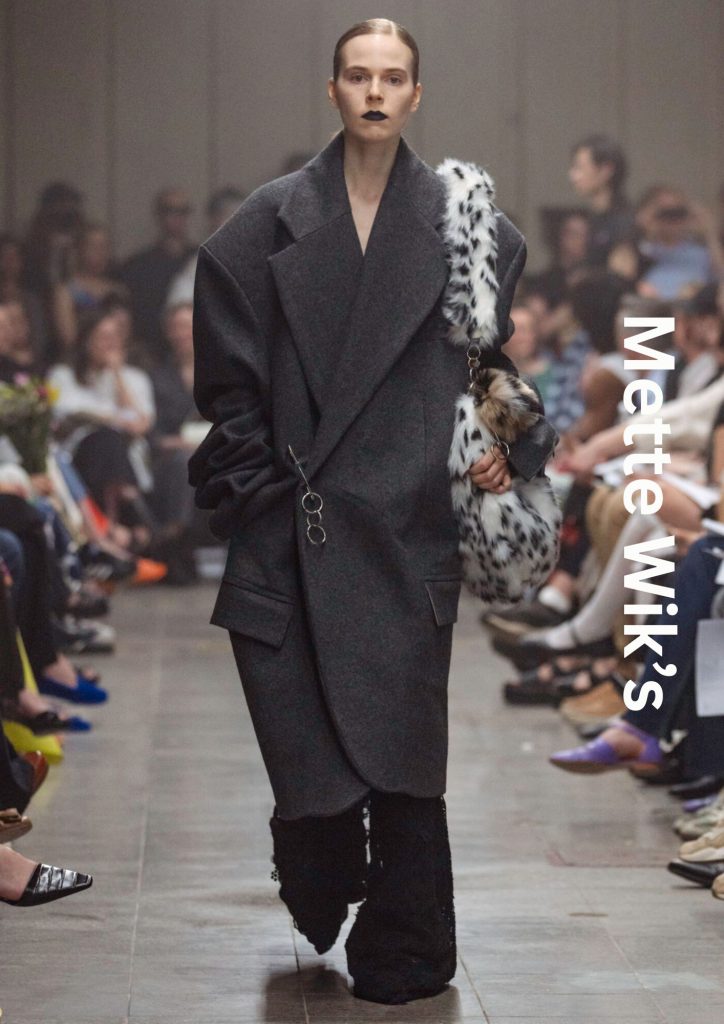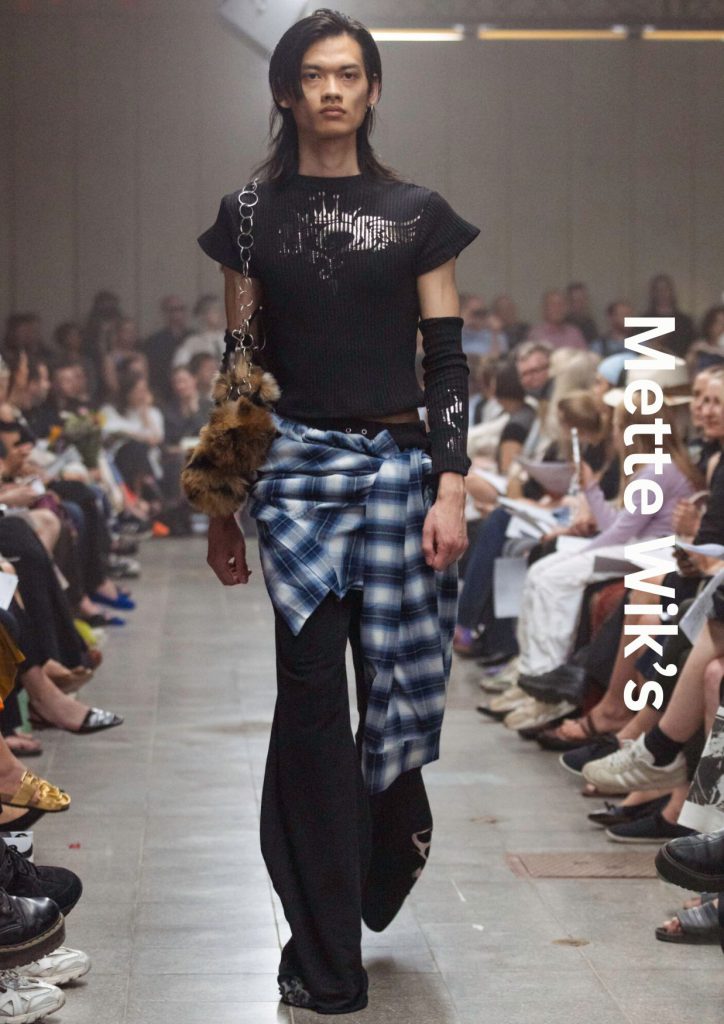We live in a time of yearning, as we collectively get more eager to relive past eras and this year’s AALTO's Class Of 2024 reflects this cultural tendency as memory and traditional handcraft prevail across all the 2024 collections.
The show featured a diverse range of collections, Students drew inspiration from various sources, including skiwear, ancient civilizations, outer space, and even the album "Captain Fantastic and the Brown Dirt Cowboy" by Elton John. Apollo da Costa Doria's vibrant rawness of their ’80s hardcore punk collection. With a sustainable approach in mind, the designer built shoes out of salvaged military boots, hammering them with rusty nails with a theme of on deconstructed masculinity running through the whole collection. Joona Hakala’s 's menswear collection explored the theme of sports through a homoerotic lens. “As a queer man, the world of sports has always presented itself to me in two contrasting ways.
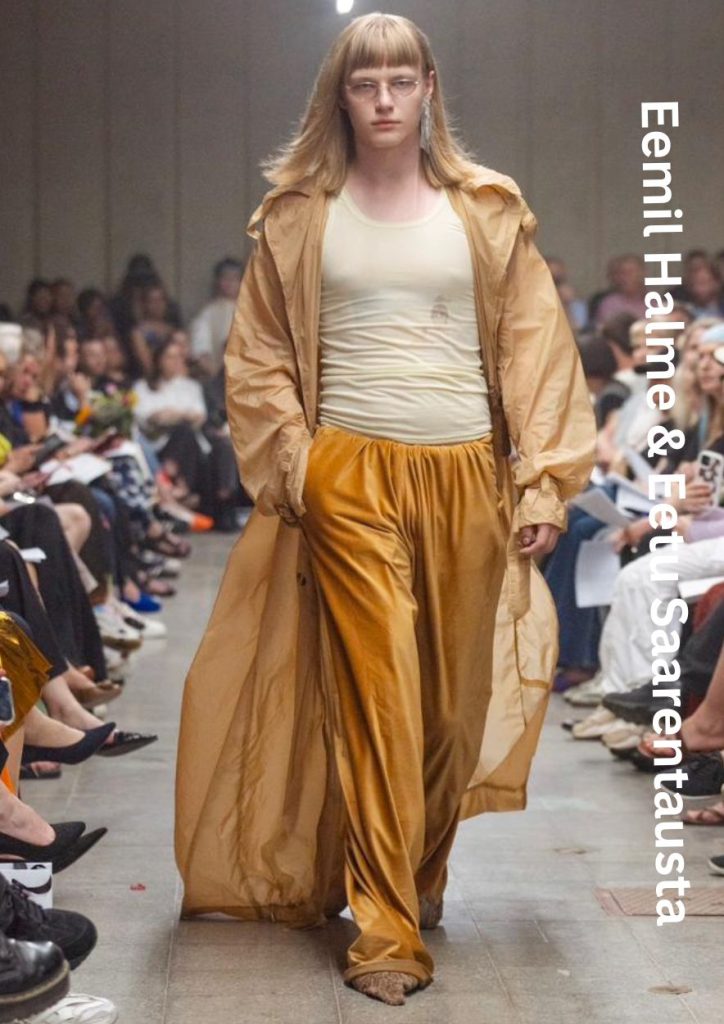
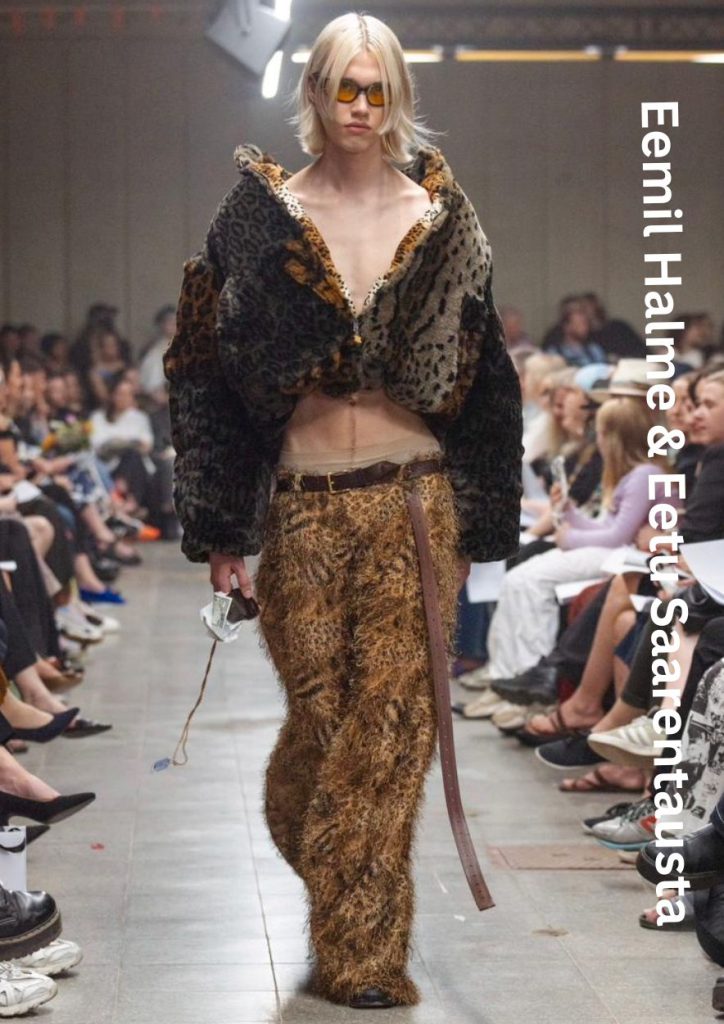
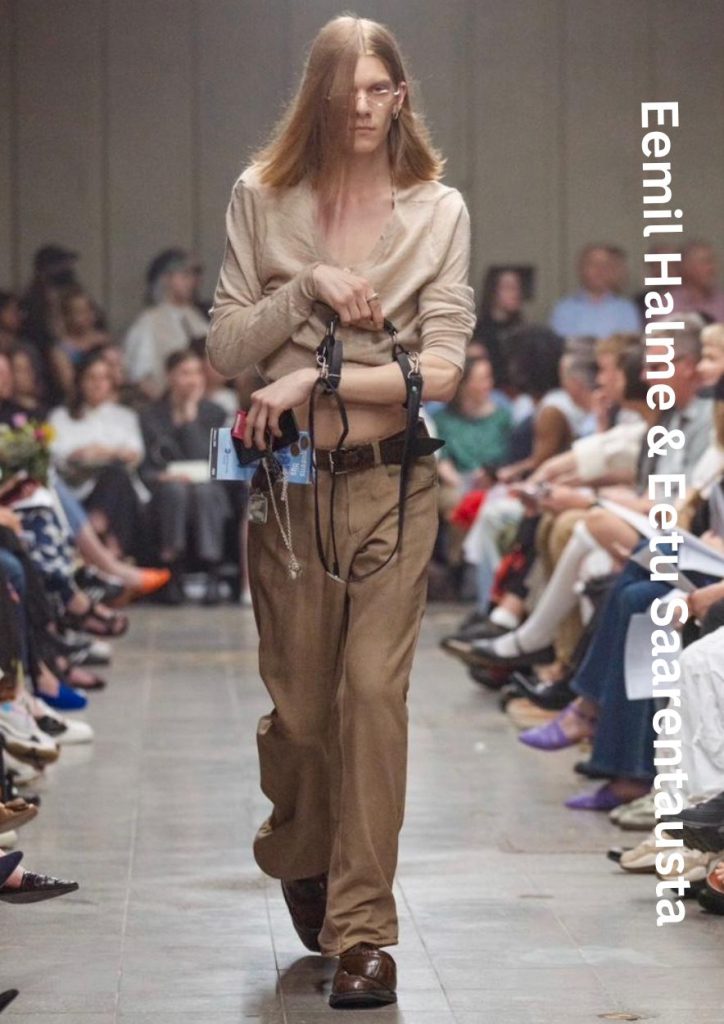
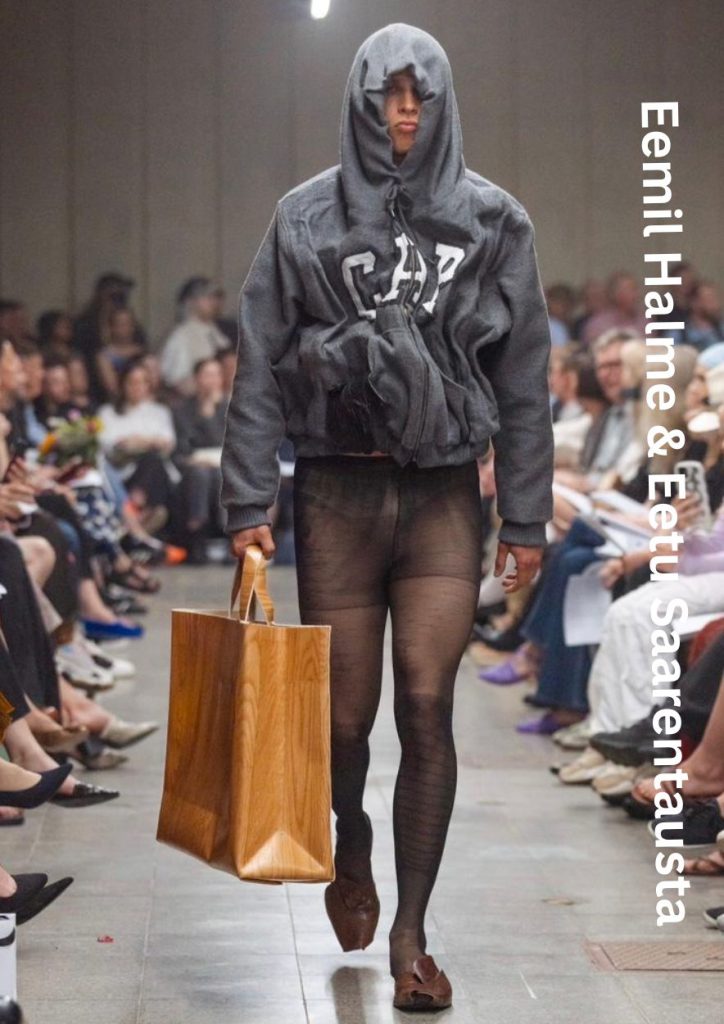
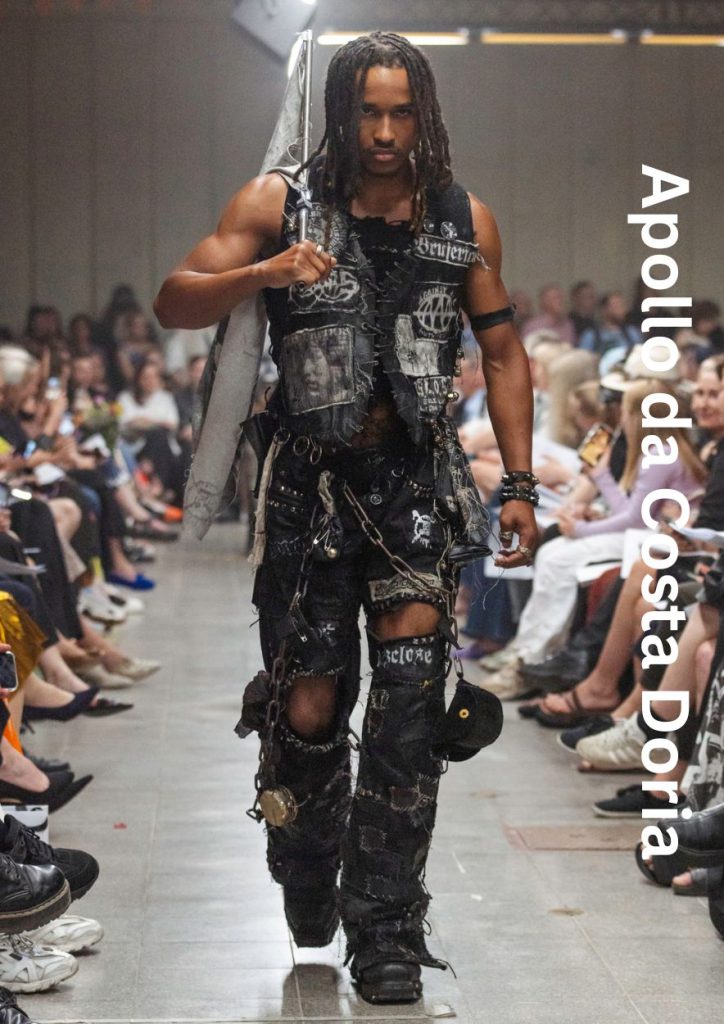
“In real life, there is no prototype; we are born into this world facing its raw reality.”
Apollo da Costa Doria transmutes artistic expressions into a starting point for their collection. “I approach my design as a musician; both my thesis and my collection consist of poetry and song.” Musical inspiration is not merely a rubric for its conception; it’s an essential element of its materiality. Doria says, “I was inspired by the vibrant rawness of ’80s hardcore punk.” With a sustainable approach in mind, the designer built shoes out of salvaged military boots, hammering them with rusty nails. Beyond its unique aesthetics, Doria’s collection stands out for its musicality. “Each shoe has a different element of percussion, creating a rhythm step by step.”
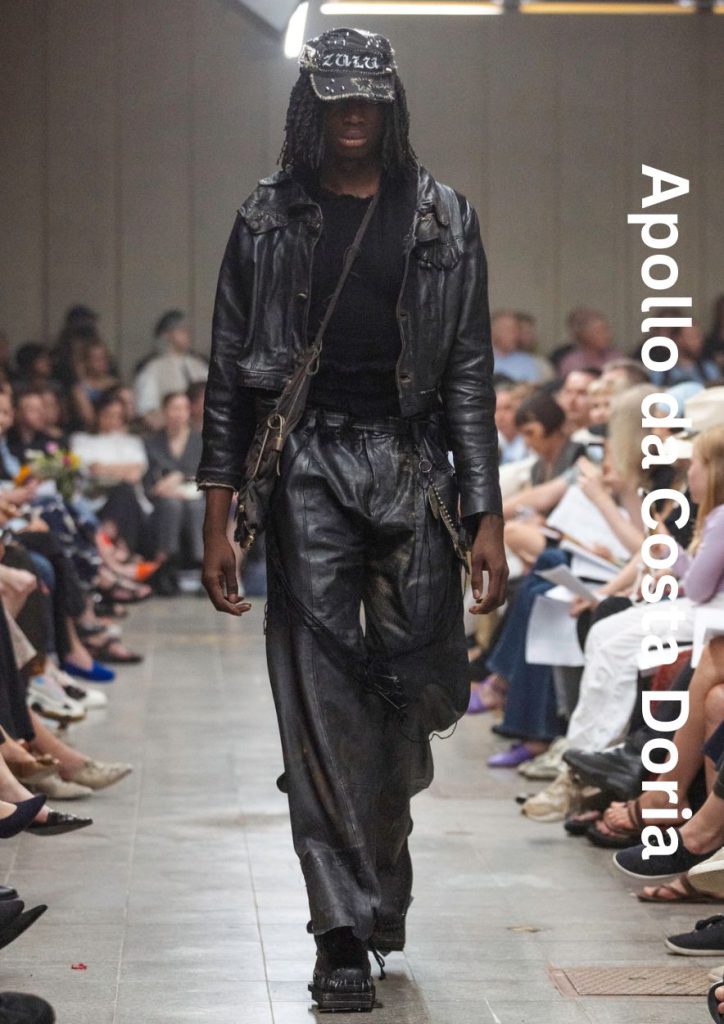
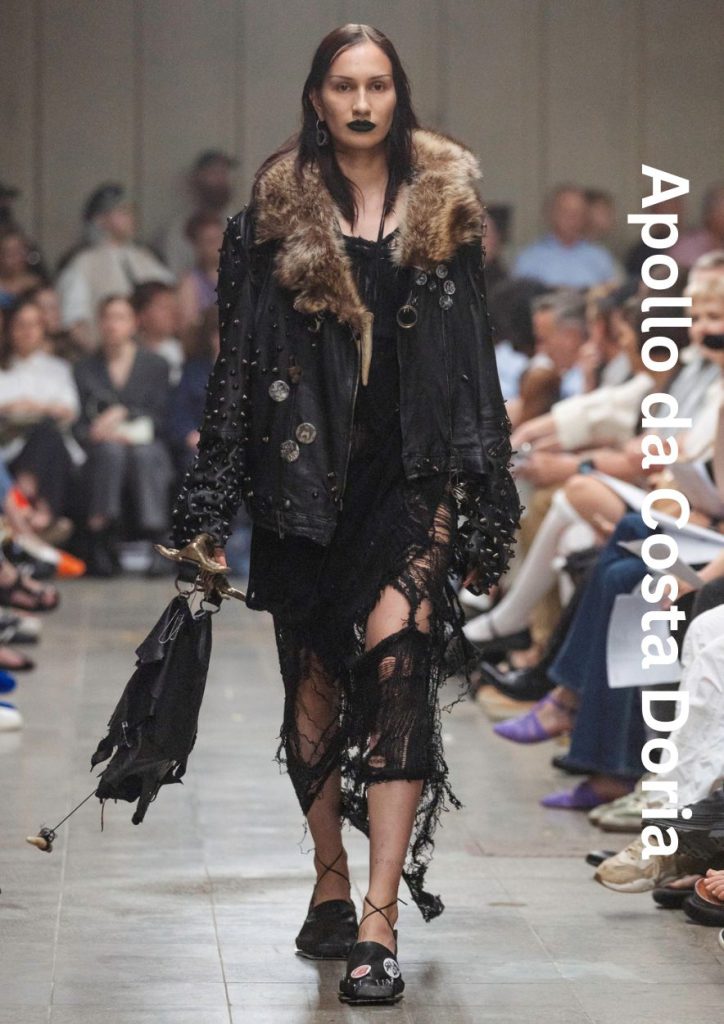
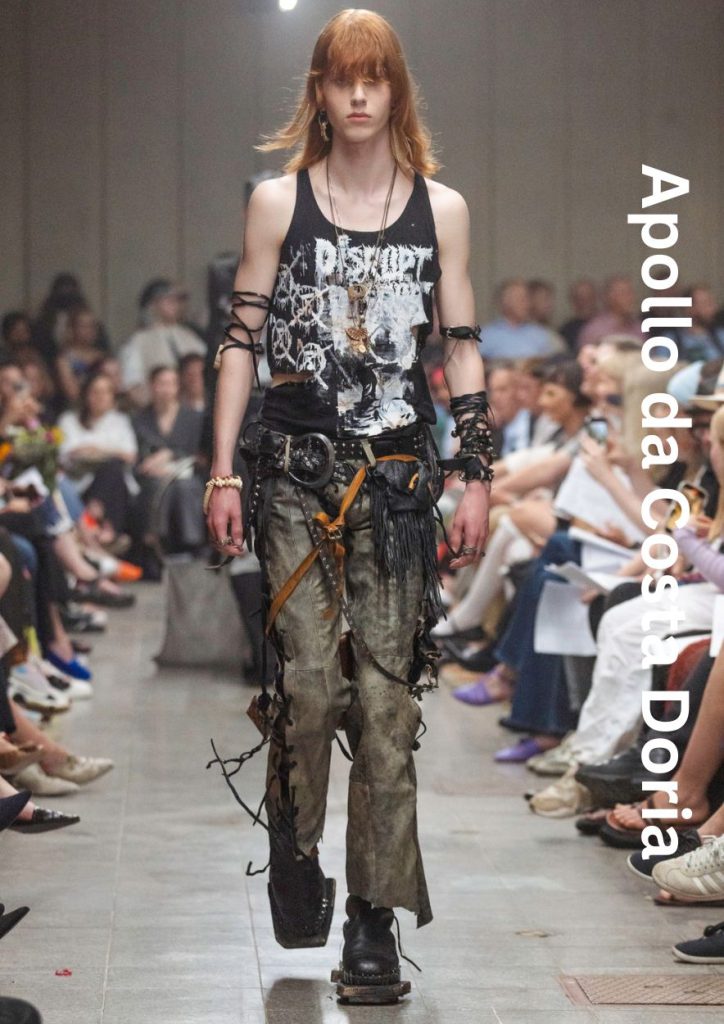
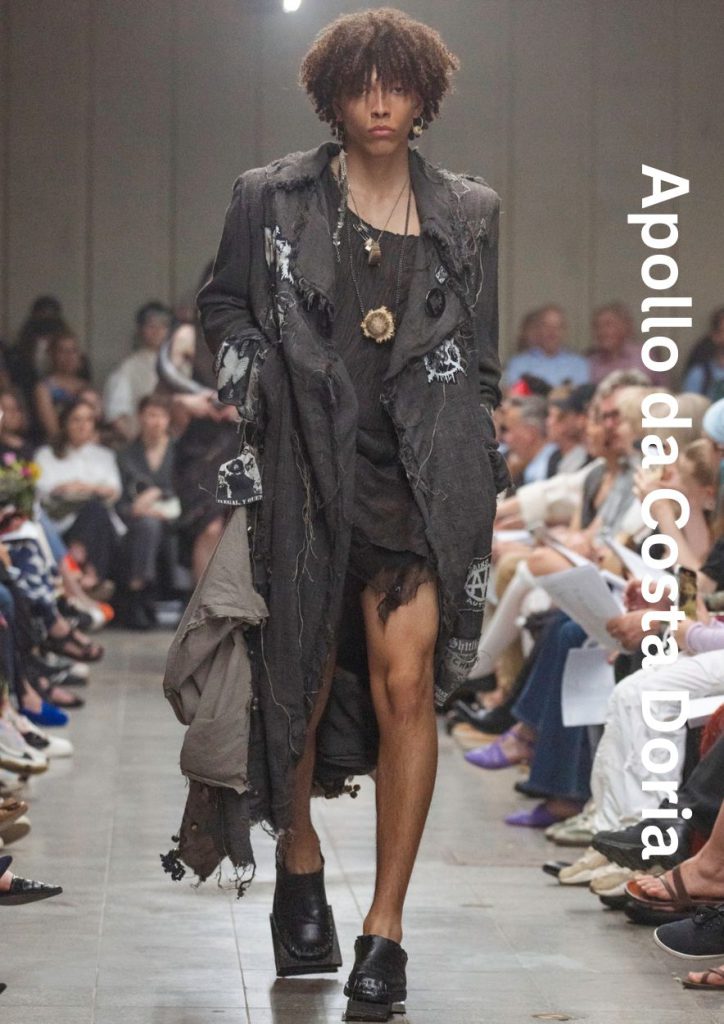
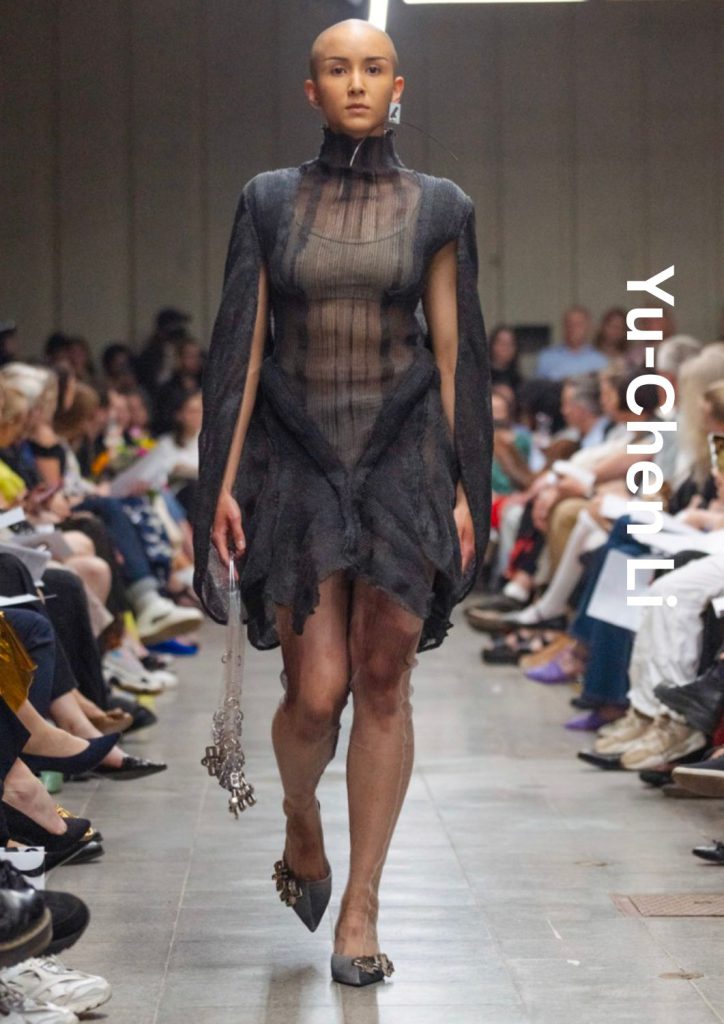
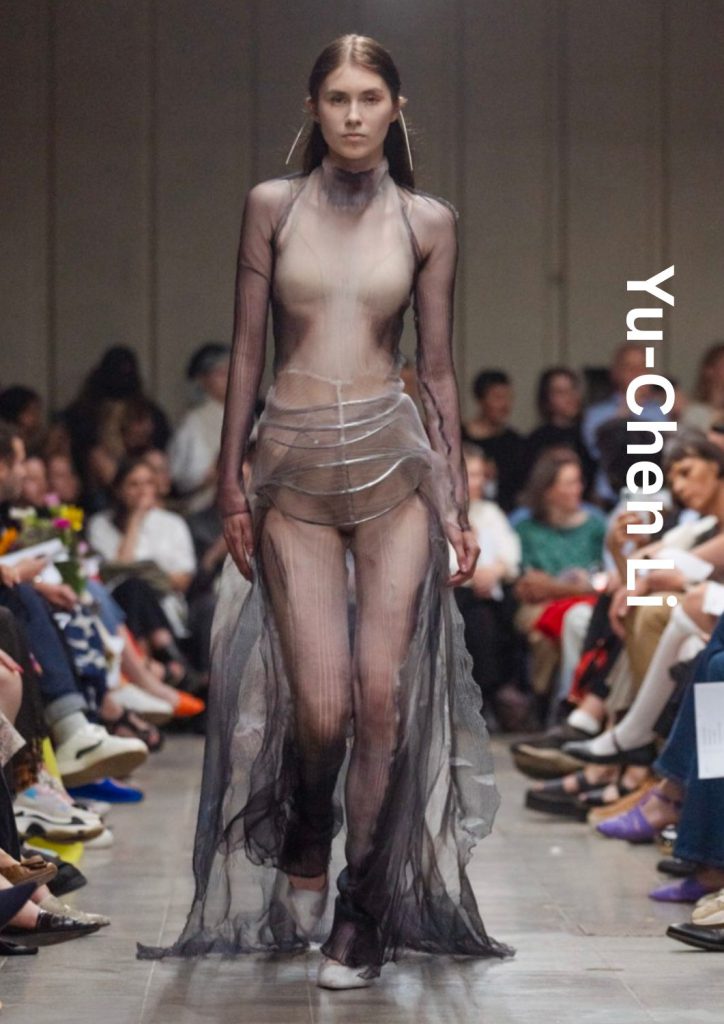
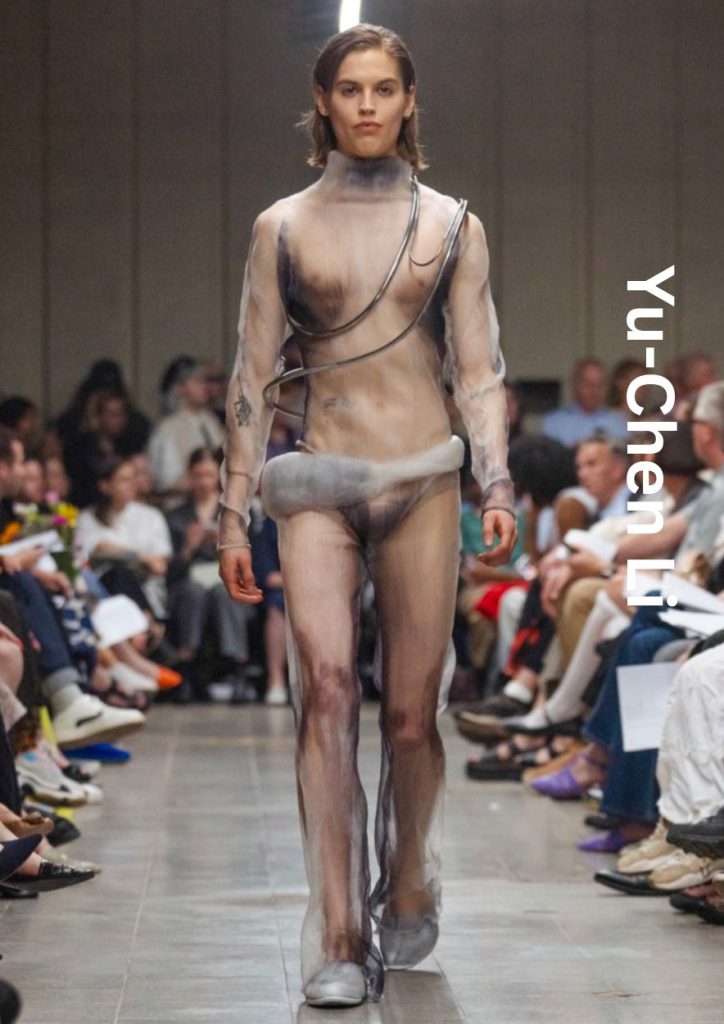
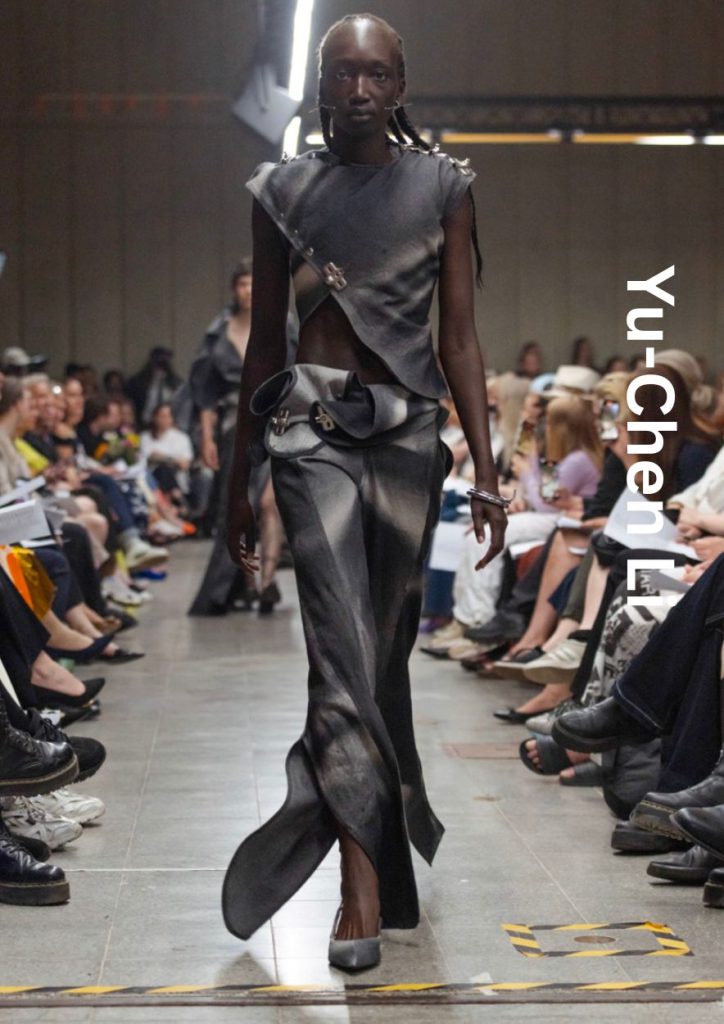
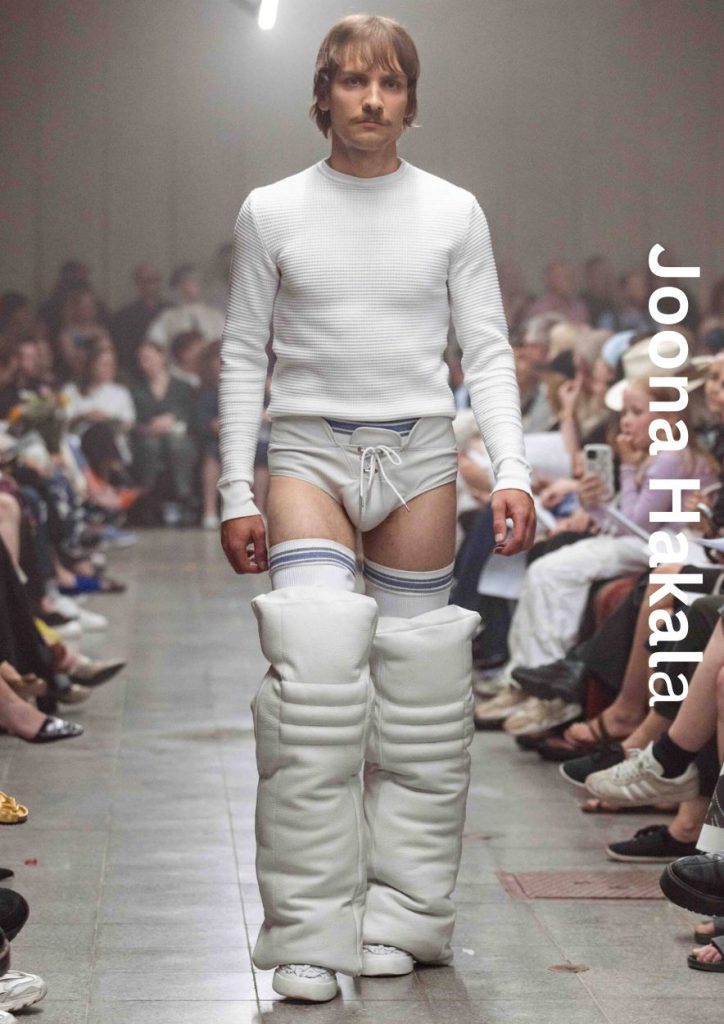
Joona Hakala’s collection explores sports through a homoerotic lens. “As a queer man, the world of sports has always presented itself to me in two contrasting ways. On one hand, it embodies an overtly masculine environment that often excludes people like me. On the other hand, its display of a certain kind of masculinity has become a stable part of gay iconography and a somewhat fetishized ‘look’.” The young designer rejects cliché representations of sportswear; instead, Hakala focuses on volumes and silhouettes. “The silhouettes and cuts in the equipment became the starting point for pattern making.” Traditional athleisure textiles are completely avoided, replaced with wool and cotton twill. Homoeroticism is explored in witty ways: knitwear mimics jockstraps, and leather is prominently featured.
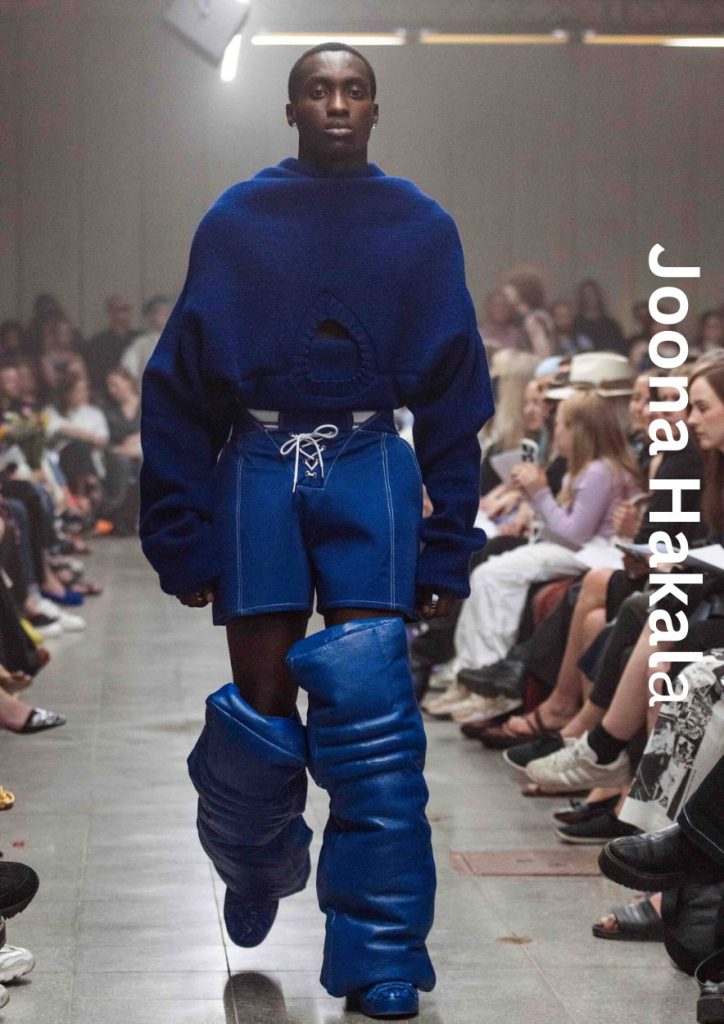
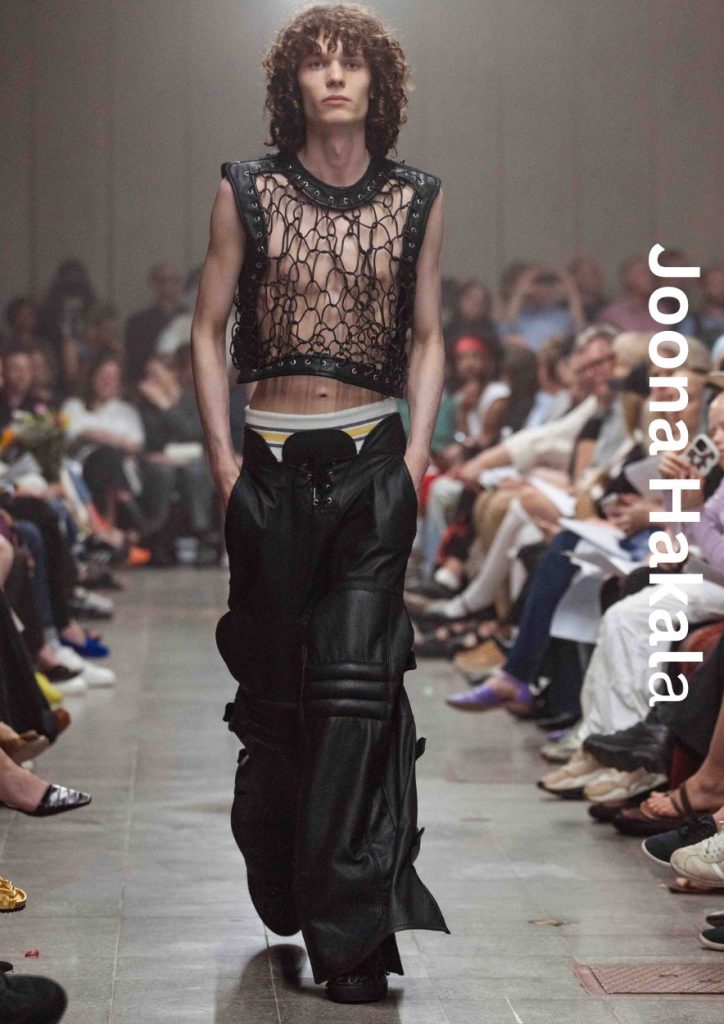
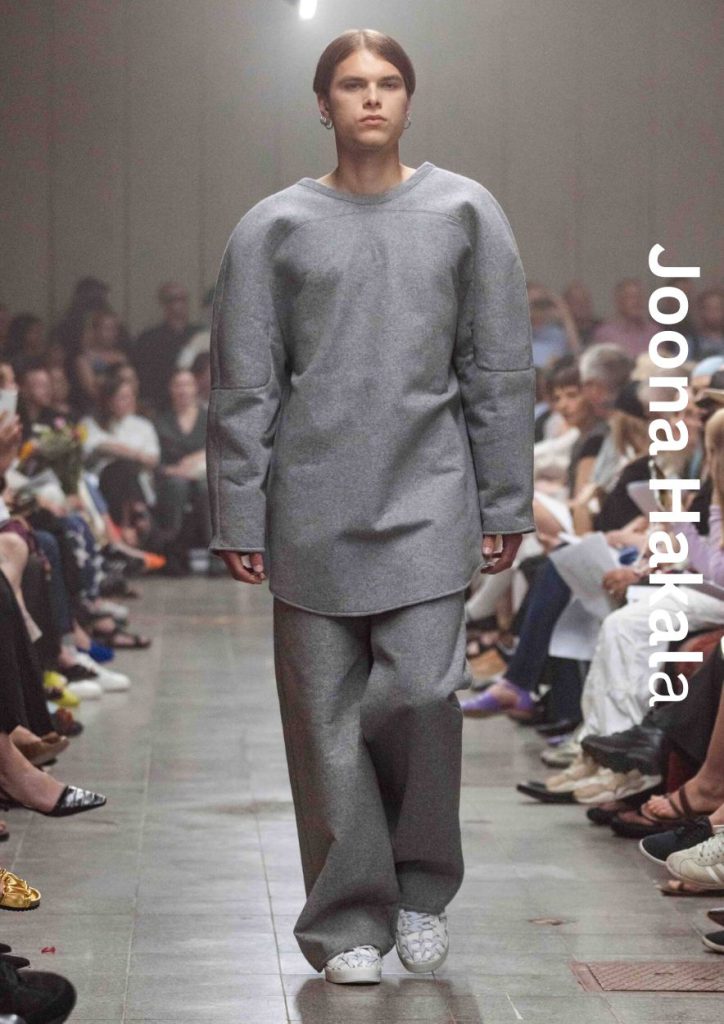
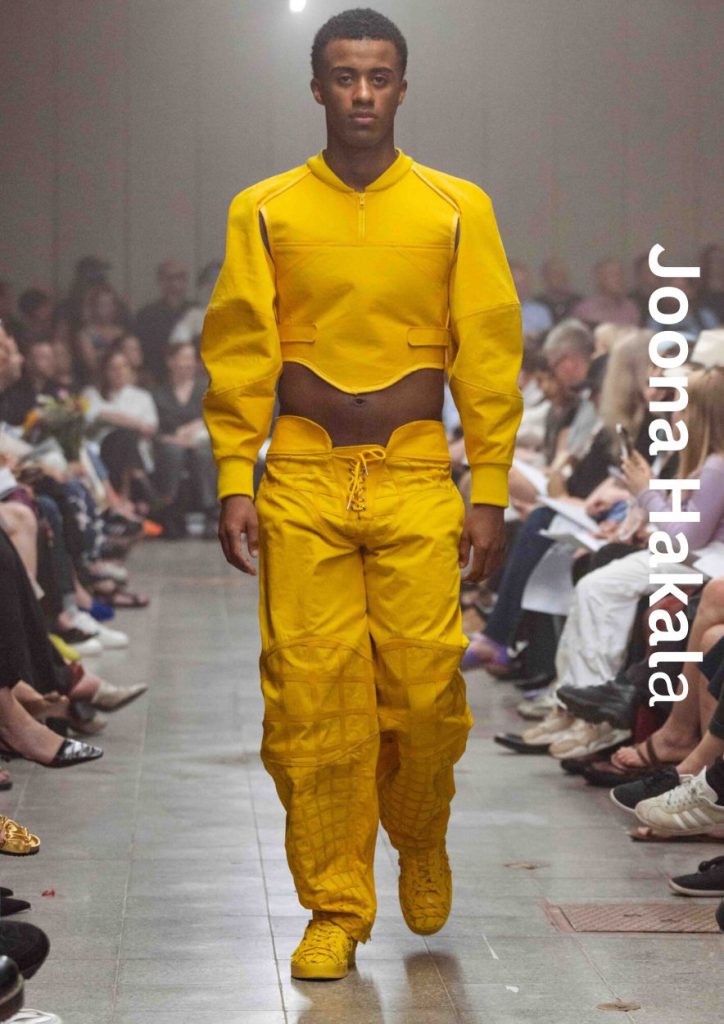
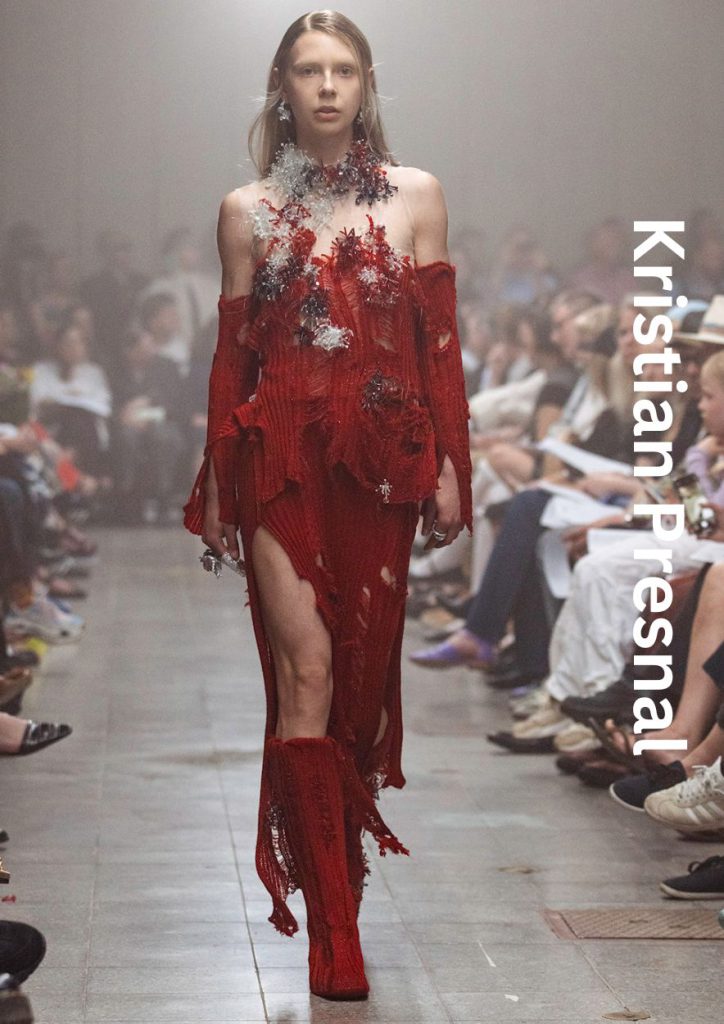
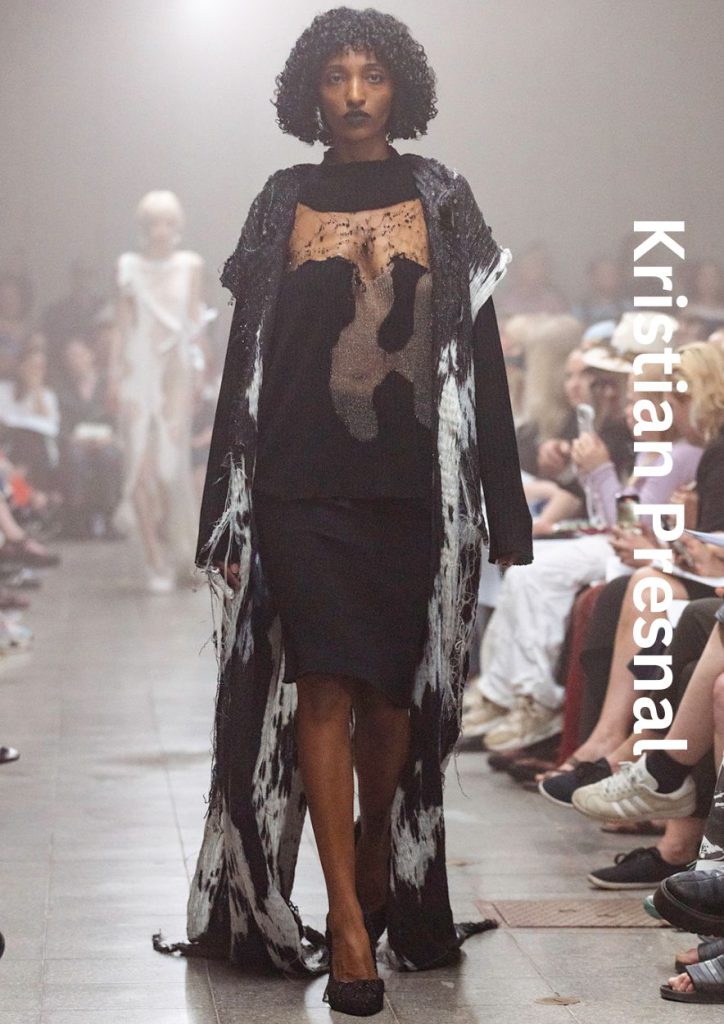
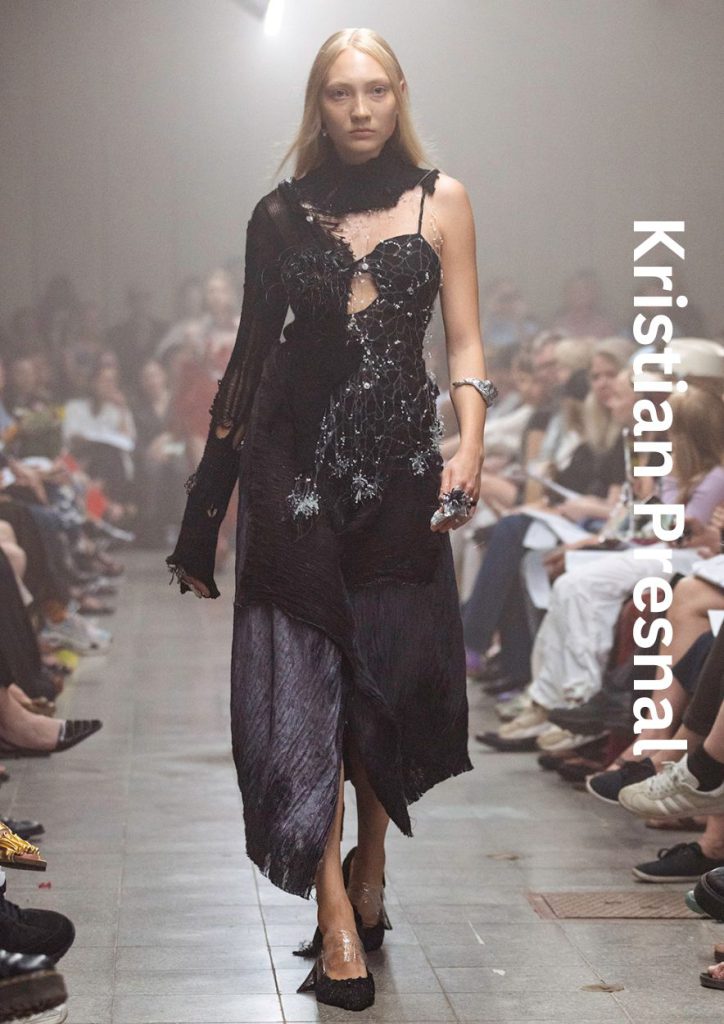
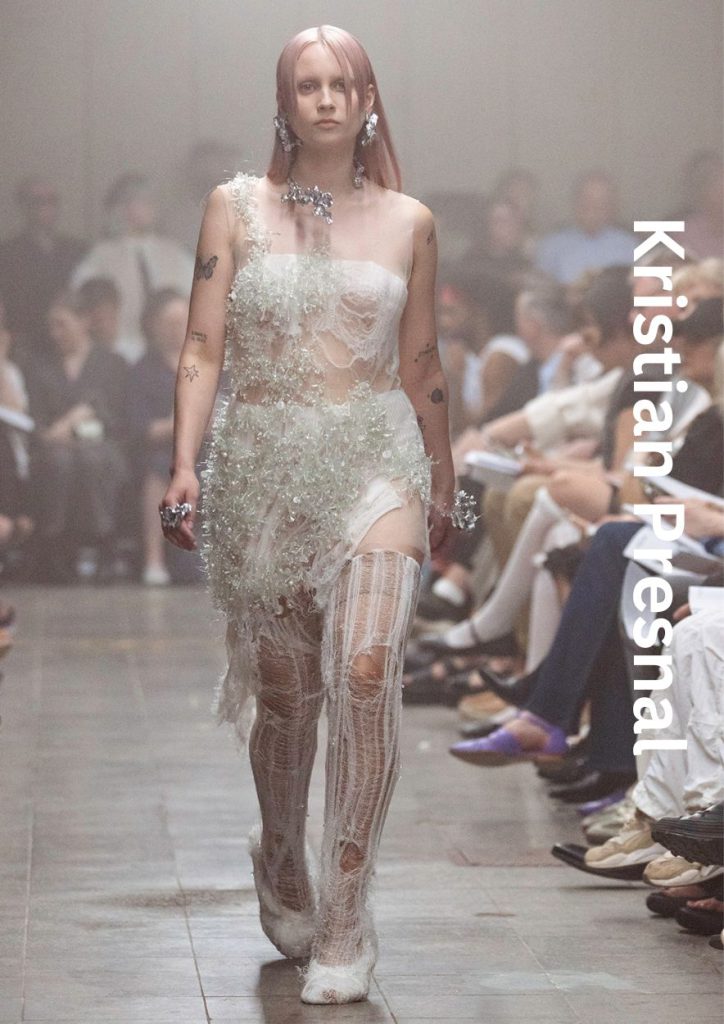
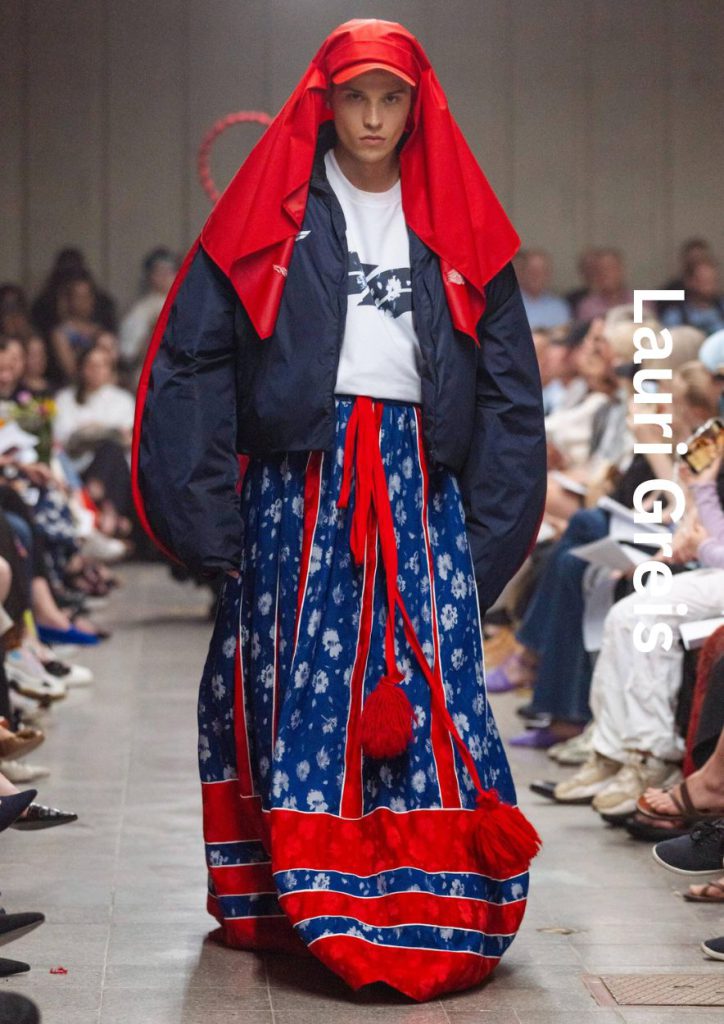
Lauri Greis’ collection is inspired by his Finnish identity. “The idea came to me when I received my grandmother’s old Antrean national costume.” By intertwining traditional Finnish national costumes with modern athleisure, Greis contrasts the past with the present. “The sportswear element represents contemporary Finnish identity, suggesting that it’s the modern version of the folk dress.” The young designer seamlessly blends this odd mix, alternating between the industrial knitting of functional wear and the craft of jacquard weaving. “I studied woven structures, tassels, and pleats used in folk dresses to achieve traditional handcraft techniques,” says the designer. The time spent studying was worth it; Greis’ collection is an intellectual show of craftsmanship.
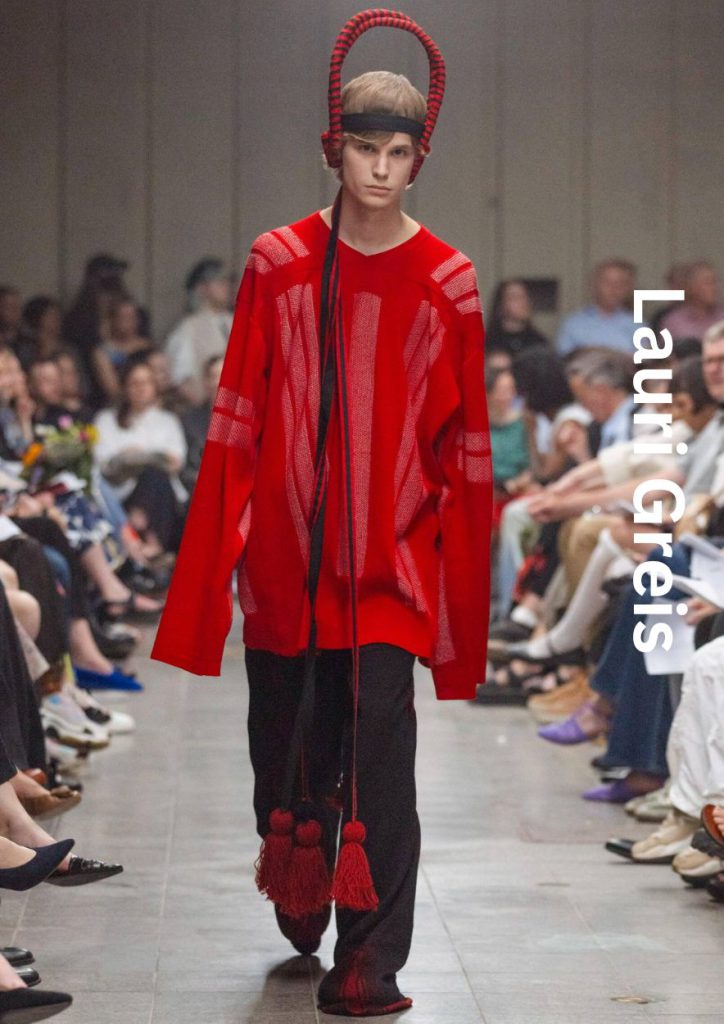
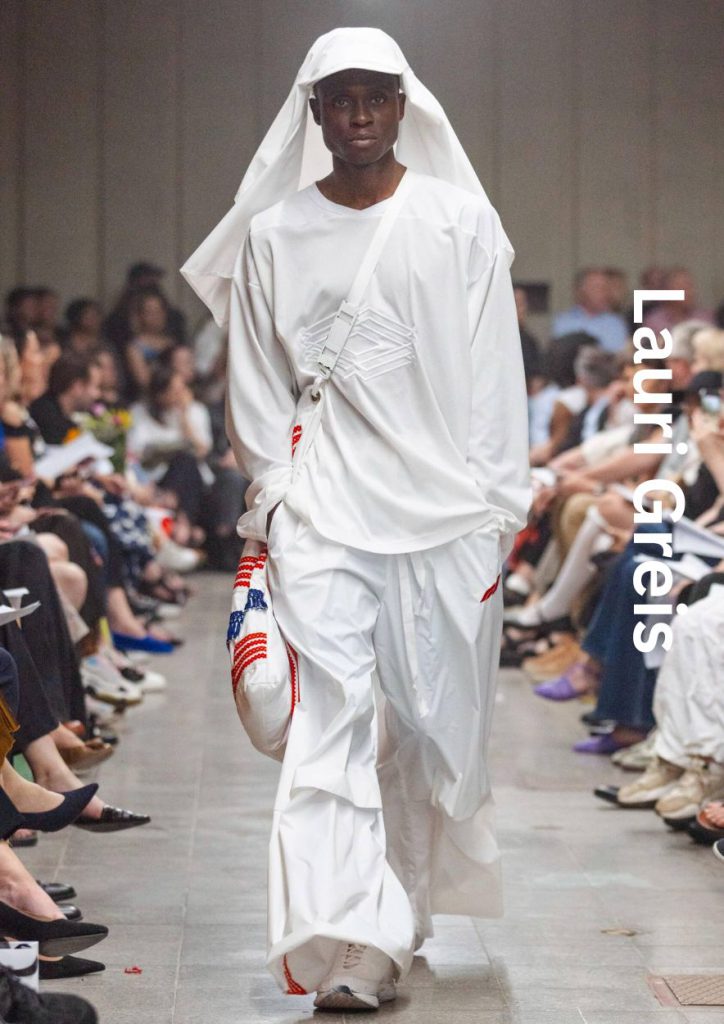
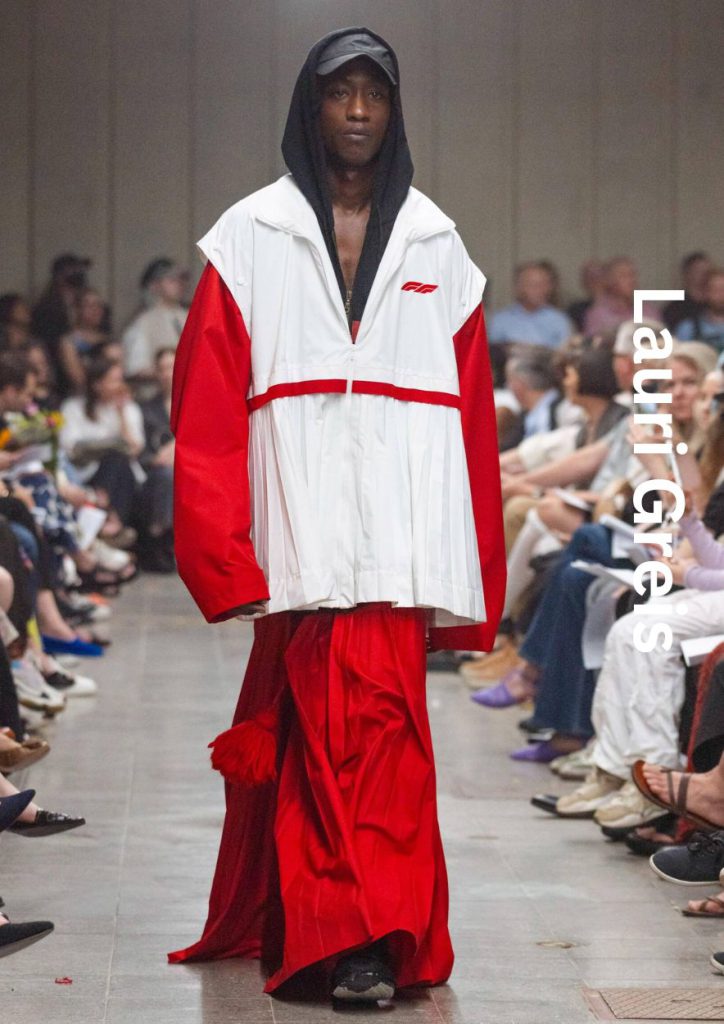
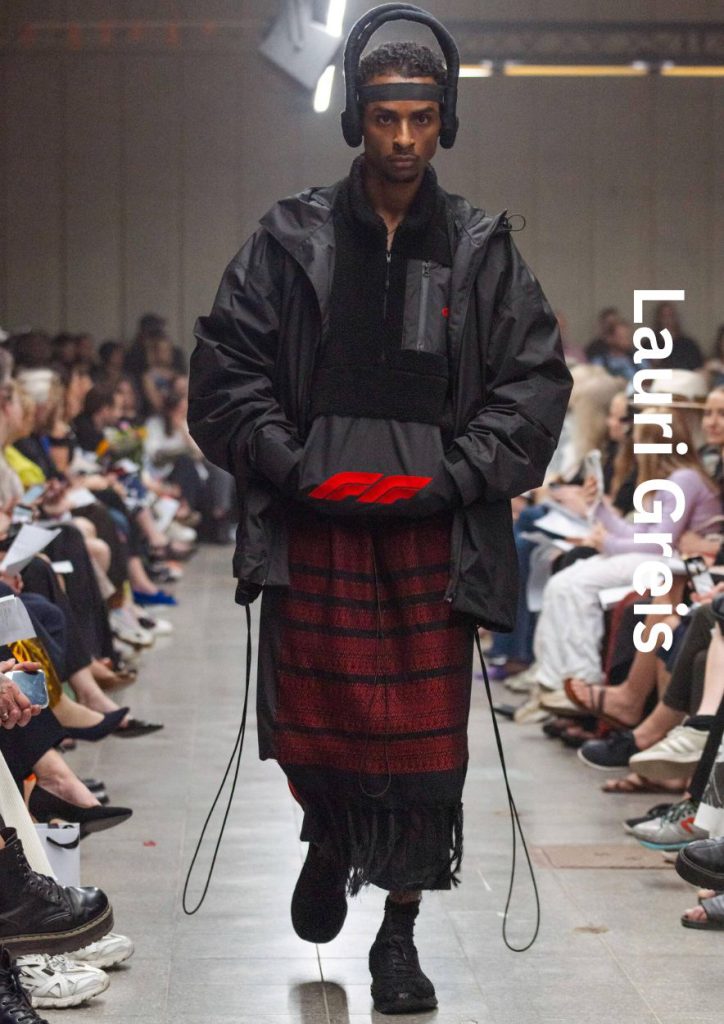
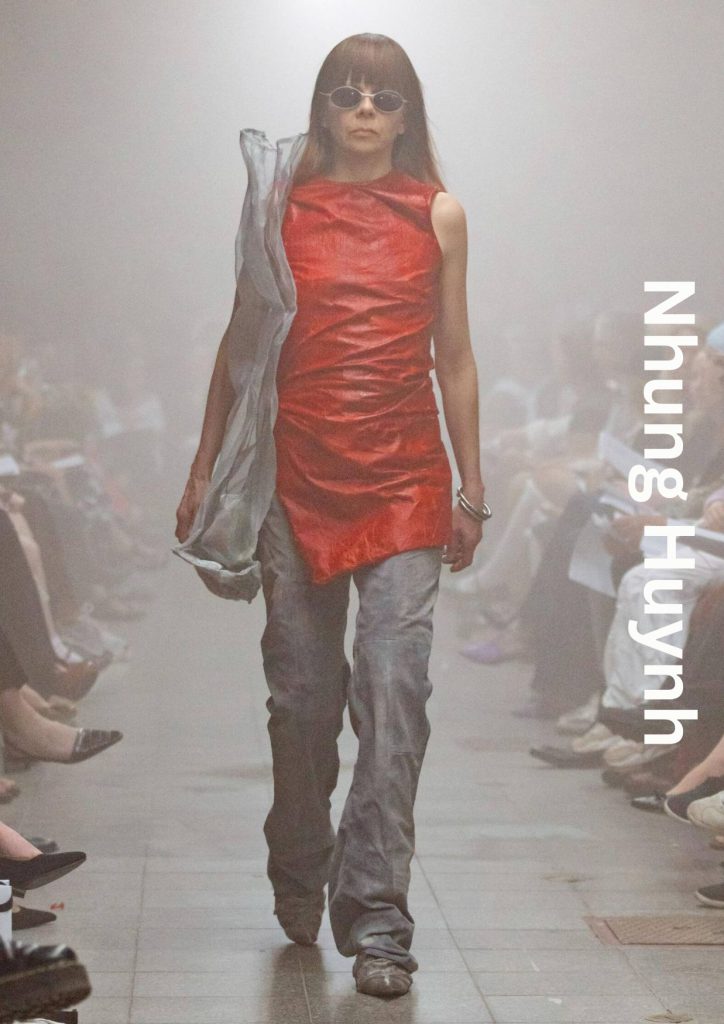
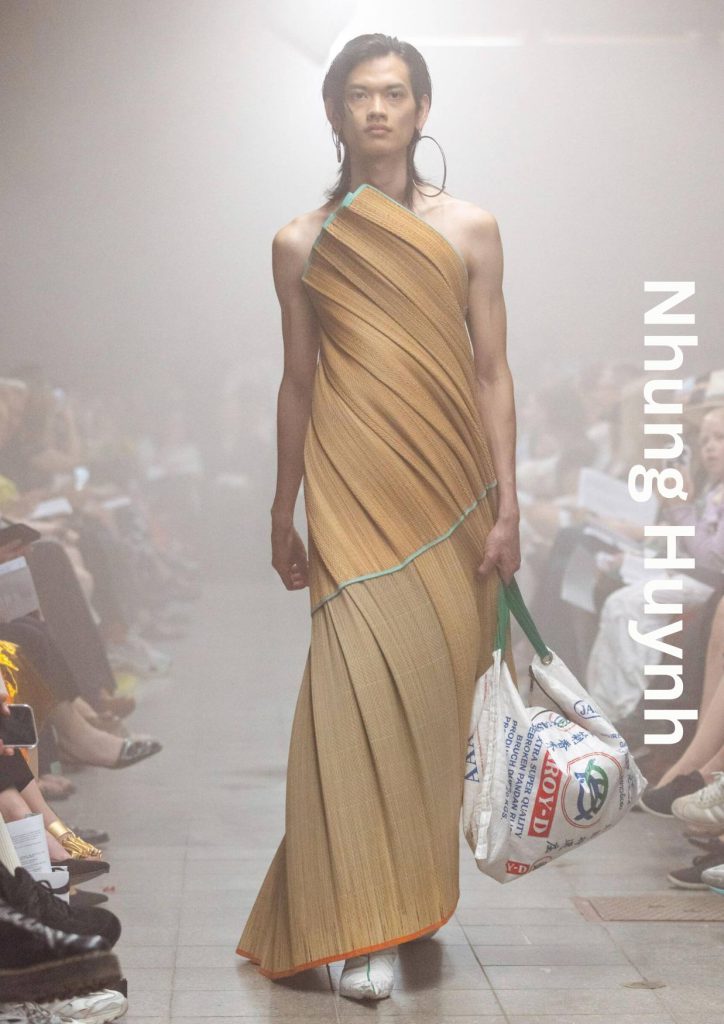
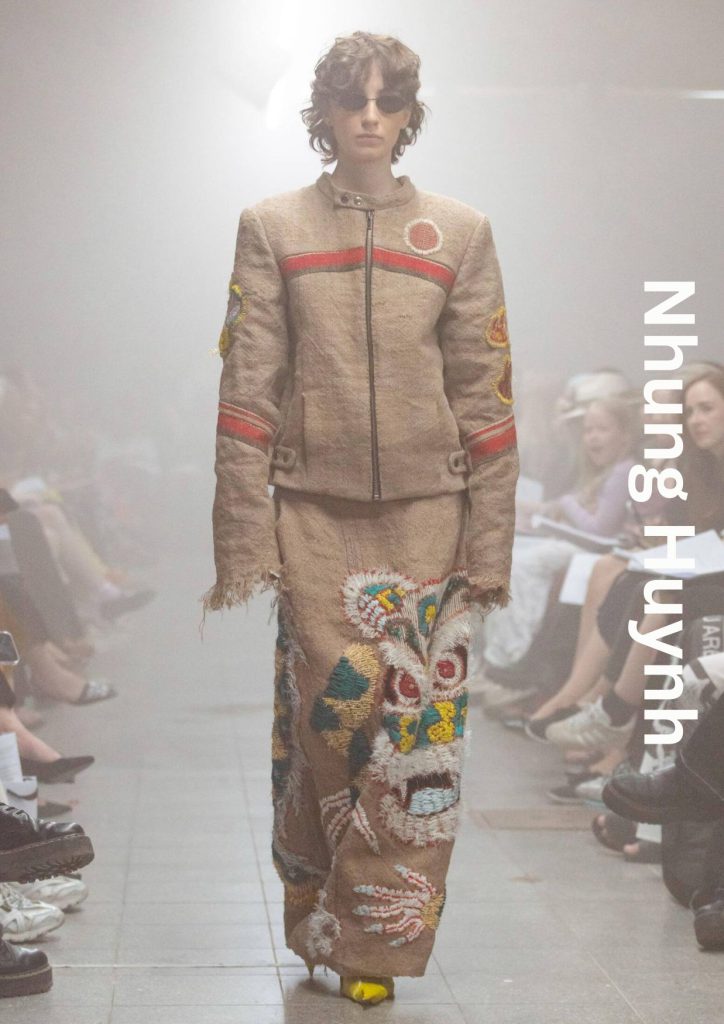
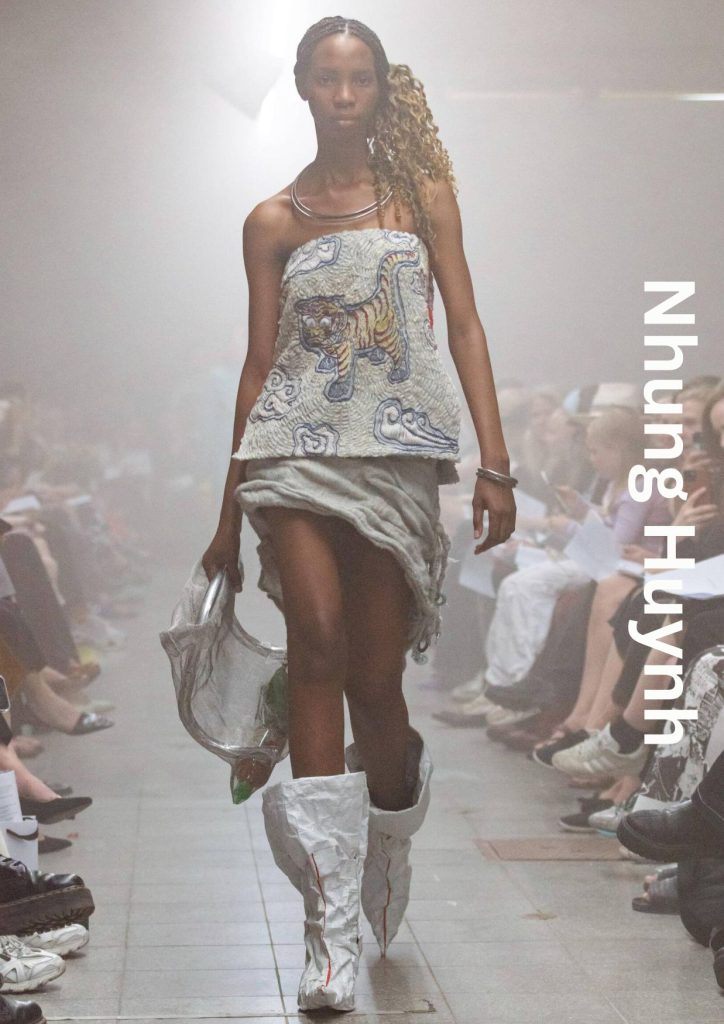
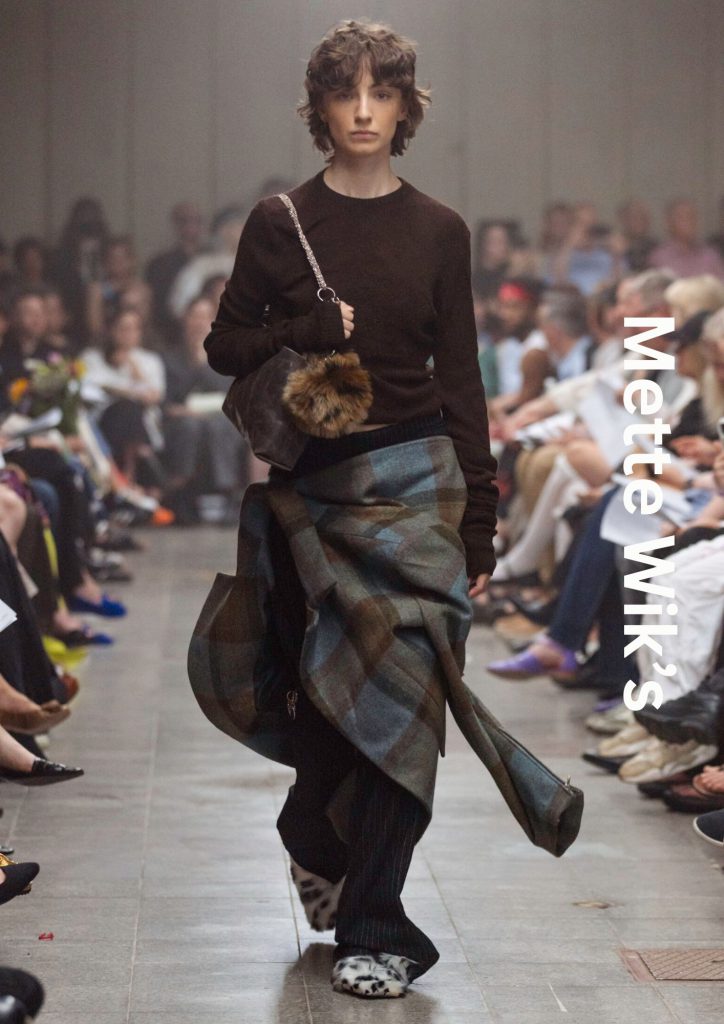
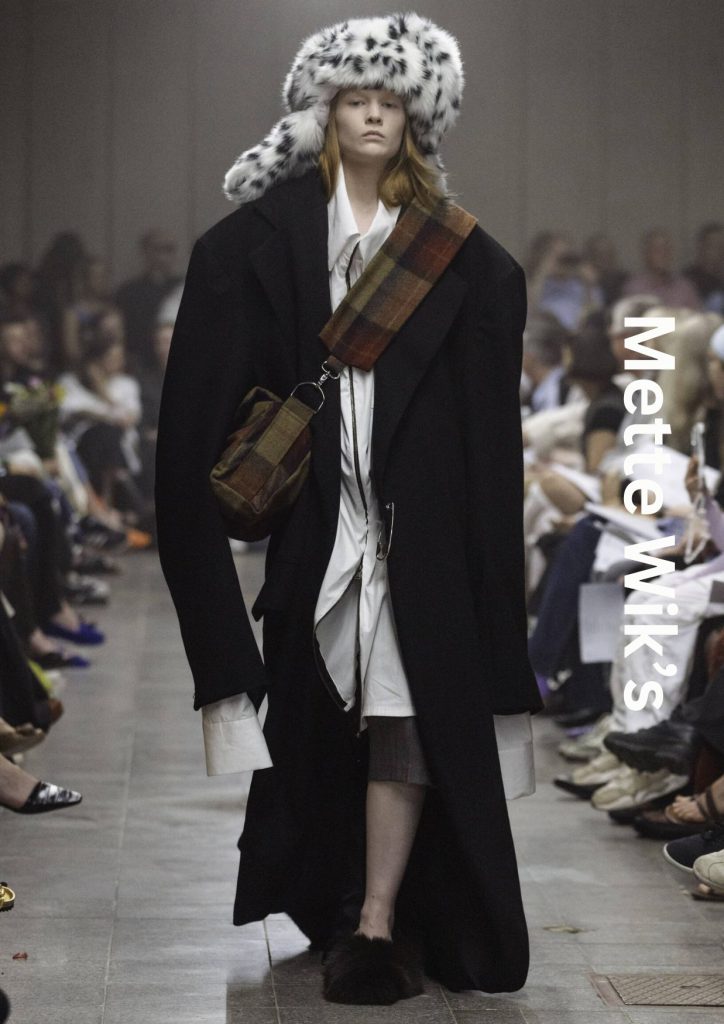
“60/40: Lost in Translation,” Mette Wik’s collection offers an interesting take on fashion as a communication device. “Both language and clothing are part of the image we build, contributing to our communication and polished exterior.” Basing herself on this assumption, the young designer utilizes her collection as a diary of her academic journey. “My collection explores my experience of the language barrier encountered during my studies at Aalto University as a Swedish-speaking Finn. I feel like I can communicate up to 60 percent in Finnish, whereas the remaining 40 percent gets lost in translation.” Her source of inspiration is cleverly manifested. “Finnish has become my verbal school uniform at Aalto, leading me to examine communication problems and misunderstandings through the lens of classical school uniforms.” Aiming to emphasize the vulnerability and frustration of being misunderstood, Wik’s design is playful, awkward, and, above all, theatrical. “I deconstruct and mix the tailored with the draped, the mature with the childish, in the pursuit of an expression lacking uniformity and collective consensus. By adding a zipper to the back of a blazer that allows insight into the body, or by wearing the blazer as a skirt, the uniformity of the garment disappears along with its previous associations.”
